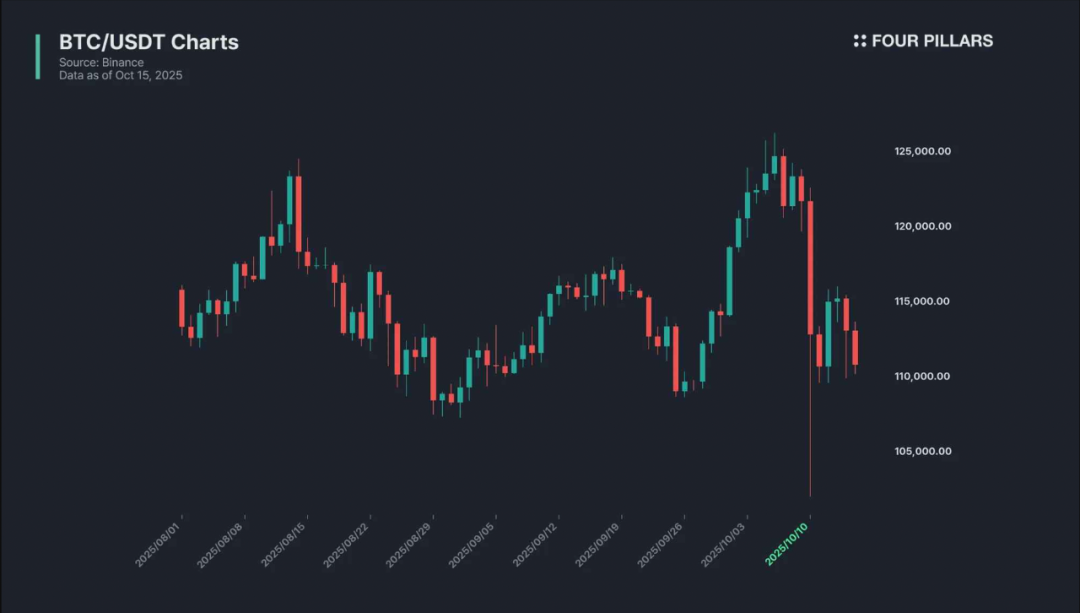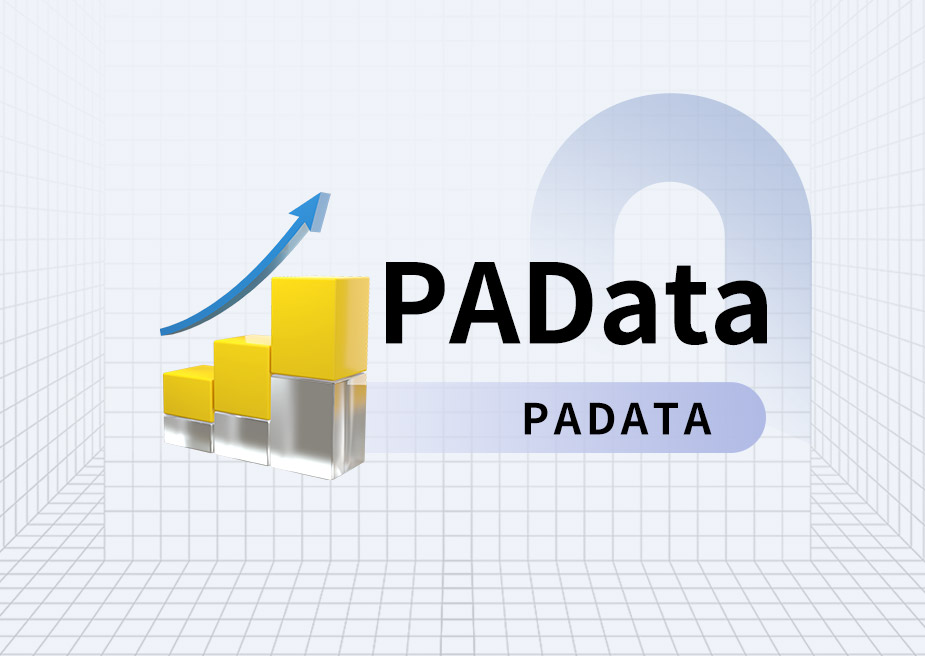We are in the DAT season of ALT (Altcoin) (DAT, "Digital Asset Trust" or "Digital Asset Treasury", is a publicly traded company strategy that makes the accumulation of digital assets its core and primary business function).
Since BitMine in July 2025, a large number of ALT DAT (Digital Asset Treasury (DAT)) companies have emerged in the market, but they have not yet undergone a real market downturn stress test.
Against this backdrop, on October 10, 2025, the crypto market experienced a historic crash. The prevailing view was that the ALT DAT company's stock price would fall more drastically than its corresponding token. But was this truly the case? This article will analyze the resilience of ALT DAT before and after this crash by comparing mNAV (market capitalization multiple), stock price performance, and token price fluctuations.
Written by: 100y/ Four Pillars
Compiled by: ODIG Invest
Original report: https://4pillars.io/en/issues/is-alt-dat-szn-over
I. ALT DAT Season (Altcoin's Digital Treasury Season)
DAT was one of the most important keywords in the crypto market in 2025. In July 2025, the emergence of BitMine and Tom Lee widely introduced the concept of "ETH DAT companies" into the market. Seizing this opportunity, numerous companies and investors quickly collaborated, creating DAT models not only for blue-chip altcoins (such as SOL, HYPE, SUI, and ENA), but also for meme coins (such as DOGE and BONK), and even for tokens that had not yet undergone TGE (such as 0G).
They employed various financing mechanisms, such as ATM (Auction Token Offering), PIPE (Private Placement), and SPAC (Special Purpose Acquisition). These companies not only purchased tokens from foundations on preferential terms but also actively participated in staking and DeFi operations, and even collaborated with ecosystem projects, employing aggressive strategies to diversify their business portfolios.
The legitimacy of ALT DAT companies has been a subject of widespread discussion in the market. However, from a macro perspective, whether it's improving accessibility or creating opportunities by leveraging volatility, they are not fundamentally different from blue-chip DAT companies like BTC and ETH.
While ALT DAT is indeed more susceptible to the impact of falling underlying asset prices compared to blue-chip DAT strategies, its close collaboration with foundations, staking and DeFi activities, and greater ease of token accumulation are all potential advantages.
Although the various risks associated with ALT and DAT had been discussed before, they had never undergone a real stress test. Until October 10, 2025, when the crypto market experienced an unprecedented crash.
II. 10/10 Plunge: Is the ALT/DAT season over?
2.1 10/10 Plunge

On October 10, 2025, US President Trump announced an additional 100% tariff on Chinese goods, causing an unprecedented crash in the cryptocurrency market. That day, major exchanges liquidated a total of $19 billion in long positions, setting a record for the largest single-day liquidation in cryptocurrency history.
Among representative assets, BTC fell 16% and ETH fell 21%; even relatively large altcoins, SOL and BNB, plummeted by 25% and 32% respectively. ATOM, due to liquidity issues, crashed 99% on Binance, briefly touching $0.001. October 10, 2025, became an extremely disastrous day for altcoins.
2.2 Is the ALT DAT season over?

What happened to the stock prices of DAT companies that held altcoins when they plummeted?
In fact, many ALT DAT companies are still operating their original businesses, but since shifting to an ALT DAT strategy, their core focus has become accumulating Altcoins and using them in blockchain-related businesses. Therefore, the stock prices of ALT DAT companies are naturally highly sensitive to altcoin prices.
Therefore, based on the closing data of October 10th and October 13th, the price changes of Altcoin and DAT company stocks were compared. Furthermore, the changes in mNAV were analyzed, and the sensitivity of stock prices to Altcoin price fluctuations is summarized in the table above.
Unfortunately, the market crash on October 10th occurred after the US stock market closed. The crypto market rebounded significantly over the weekend, while US stocks failed to trade. Therefore, the impact of this crash was not fully reflected in ALT DAT's stock price.
2.2.1 mNAV Analysis
mNAV Ascendant:
MSTR (BTC), BMNR (ETH), DFDV (SOL), UPXI (SOL), SUIG (SUI), TRON (TRX), LITS (LTC), IPST (IP), ZONE (DOGE)
mNAV decliners:
SBET (ETH), HYPD (HYPE), TONX (TON), BNKK (BONK)
mNAV is a metric used to measure a company's valuation relative to the value of its Altcoin assets. For the DAT model, which focuses purely on asset management, mNAV = 1 is considered normal.
However, due to differences in existing business scale, management capabilities, financing methods, and underlying asset types among companies, the mNAV value will naturally vary.
Interestingly, with a few exceptions, most companies saw a slight increase in mNAV after the market crash. Even for companies whose mNAV declined, the drop was quite limited, with the exception of BNKK.
2.2.2 Sensitivity Analysis
Sensitivity > 1:
BMNR (ETH), DFDV (SOL), UPXI (SOL), HYPD (HYPE), TONX (TON), BNKK (BONK)
Sensitivity < 1:
SBET (ETH), LITS (LTC), ZONE (DOGE)
Negative sensitivity:
MSTR (BTC), SUIG (SUI), TRON (TRX), IPST (IP)
Market participants often view DAT as a leveraged instrument for its underlying token. In fact, a VanEck report described MSTR as a "convexity bet" on BTC price, implying that investors could gain exposure similar to a call option. Following this logic, the "sensitivity" value measuring stock price changes relative to token price changes should be greater than 1.
However, analysis revealed that while most companies did have a sensitivity greater than 1, some companies had a sensitivity lower than 1, or even negative values.
2.2.3 Comprehensive Assessment
In the cases of ETH and SOL, the closing price actually increased from October 10th to October 13th. Most companies maintained or even increased their mNAV. MSTR (BTC DAT company) saw its stock price rise despite a slight drop in BTC price, and its mNAV increased accordingly. This demonstrates that blue-chip DAT companies such as BTC, ETH, and SOL effectively maintained their mNAV even during periods of significant market volatility.
In other analyses of ALT DAT, the results surprised the market. Investors generally believed that once the price of the underlying altcoin fell, ALT DAT's mNAV would also collapse. However, the opposite often happened. Companies such as SUIG, TRON, LITS, IPST, and ZONE showed the opposite trend, especially SUIG, TRON, and IPST, whose stock prices rose despite the decline in their corresponding tokens.
This suggests that the correlation between ALT DAT's valuation and the price of its underlying token is not as strong as the market might assume. Reasons for this could include the fact that a company's valuation depends not only on the token price but also on leadership capabilities, funding structure, and the current state of its business.
In addition, the relatively low market attention given to ALT DAT stocks may also be a contributing factor. For example, on October 13, TRX's trading volume on Binance was $317 million, while TRON's trading volume on Nasdaq was only about $4 million; IPST's trading volume that day was even lower, at only about $300,000.
As the table shows, due to significant differences in the leadership, strategy, and business model of ALT DAT companies, it is difficult to draw a unified conclusion based solely on token prices. However, the following key observations can still be summarized:
For blue-chip tokens such as BTC, ETH, and SOL, their market resilience is significantly stronger than that of other altcoins, and the core metric mNAV of DAT company has remained stable as expected.
Other ALT DAT companies showed surprising stability in mNAV during this crash, contrary to common market assumptions;
The sensitivity range is extremely wide, from 0.6 to 3-4 and even 7-8, indicating that in the future, if combined with other factors besides the underlying assets, continuous tracking of these relationships will be of great value.
III. Is ALT DAT really over?
Since the plunge on October 10, many people believe that the DAT season is over.
Indeed, while mainstream token prices have rebounded, many altcoins have yet to recover, making the situation even more difficult for ALT DAT. However, analysis of ALT DAT's mNAV reveals that, although the reasons require further investigation, they have demonstrated resilience beyond market expectations.
Of course, operating a DAT company and maintaining its stock price may become increasingly difficult. Given that accessibility and volatility are key factors in maintaining a DAT premium, the attractiveness of DAT company stock is expected to decline as global regulations become clearer and the blockchain market moves towards an institutionally dominated ecosystem.
In fact, even Metaplanet, the BTC DAT company that once benefited from the premium in the Japanese market, recently recorded its mNAV falling below 1 for the first time, demonstrating the harshness of the market environment.
But one thing is certain: ALT DAT has not ended.
In fact, the stock price performance of many ALT DAT companies outperforms their underlying Altcoins, which may become an opportunity for them to build credibility and positive perception among institutional investors.
Key observations for the future of ALT and DAT:
Subsequent stress test: This sharp drop is the first major market test since the DAT concept became popular. Going forward, it's necessary to continuously observe the performance of ALT DAT companies' stock prices and mNAV during the next downward cycle.
ALT DAT Stock Trading Volume: With increased regulatory clarity and institutional participation, the attractiveness of ALT DAT stock may diminish. Long-term trends in its trading volume need to be closely monitored.
Sustainability of mNAV < 1: Currently, many ALT DAT companies have mNAV below 1. Since mNAV > 1 is a key indicator for the formation of a positive feedback loop in the DAT model, it is worth observing whether these companies can return to above 1, and what the consequences will be if they cannot recover.
Business Diversification: ALT DAT's competitiveness lies not only in holding tokens, but also in staking, DeFi operations, and close collaborations with ecosystem projects and foundations to deliver diversified products. It remains to be seen what strategies they will adopt to survive in this fiercely competitive market.
Competition among multiple ALT DAT companies for the same altcoin: Unlike BTC, ETH, and SOL, most altcoins typically have only one ALT DAT company because DAT strategies rely on deep cooperation with the foundation. However, in some cases, two or more ALT DAT companies may exist for the same altcoin. In these situations, companies with closer ties to the foundation may gain a competitive advantage, and the evolution of this competitive landscape warrants continued monitoring.
In the current crypto market, we need to ask ourselves: In a highly volatile crypto environment with an nascent regulatory landscape and frequently shifting narratives, where exactly are the boundaries of "asset financialization"?
Regardless, the resilience of ALT/DAT remains to be seen. It's not just about the rise and fall of a sector, but a collective test of whether the crypto market can foster a sustainable financial structure. Perhaps the real answer lies not at the top or bottom of the price curve, but in who will remain at the table after this ebb tide.
*This article is for learning and reference purposes only. We hope it will be helpful to you. It does not constitute any investment advice. DYOR.







